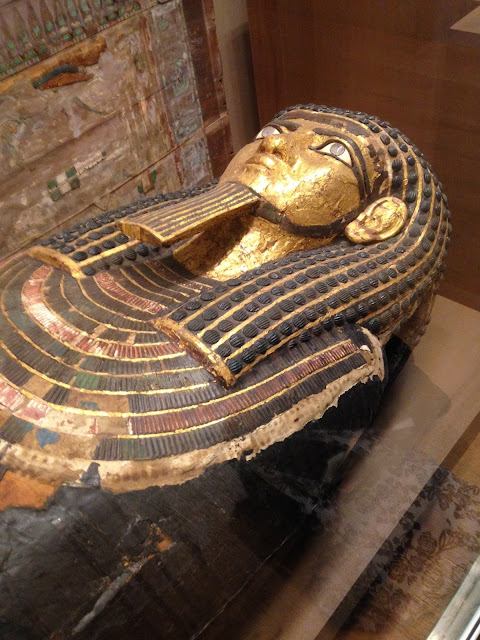Day 396 - El Greco
January 10, 2025
Looking into gallery 619 through one doorway, I saw lots of El Grecos. But as I approached the space today from a different direction, two painntings from Picasso's Blue Period confronted me, and my first reaction was an irked "What the f___?" Yes, I could see that the figure in Picasso's "The Blind Man's Meal" is gaunt and long-limbed, like those in many El Greco paintings. And yes, Picasso was a Spaniard and El Greco a Spaniard by adoption. But really?
After I read the introductory wall sign, though, I better understood the rationale for the arrangement, and it made sense. Entitled "El Greco and European Modernism," the sign informs us that El Greco left few followers but was rediscovered at the turn of the 20th century and influenced such artists as Picasso, Cezanne and Max Beckmann.
It was probably inevitable that I would write about El Greco's "View of Toledo"; it's a painting I've known and loved since I was a child. I thought I'd first seen it in Betsy Chase's fabulous art book for children, Famous Paintings, but when I checked my copy, I learned that El Greco is represented by "Saint Martin and the Beggar" (which I immediately recognized when I first visited the Art Institute of Chicago). Painted around 1599-1600 and measuring about 54 inches high and 50 inches wide, "View of Toledo" shows, in the middle distance, the city atop a hill. Its structures, the most prominent of which are a tall steeple and a large building at the very top of the hill (the mayoral palace? another palace?) are painted in several shades of gray. In the foreground are rolling green hills topped by darker green bushes and trees, along with a wall that snakes up toward the city. But what is most striking is the gray sky, broken by white clouds, that occupies a good third of the canvas. The scene calls to mind a violent thunderstorm; the thin white lines that define the city's buildings suggest the effects of lightning. The painting is spectral, hallucinatory.
Next to it hangs a smaller (perhaps 44 inches wide and 32 inches high) landscape, "Rocks at Fontainebleau," that Cezanne painted sometime during the 1890s. The curving forms of the rocks echo those in the El Greco painting, and greeens and grays are important in Cezanne's palette. But to me, there is nothing especially memorable about this painting. The El Greco, in contrast, is unforgettable.





Comments
Post a Comment